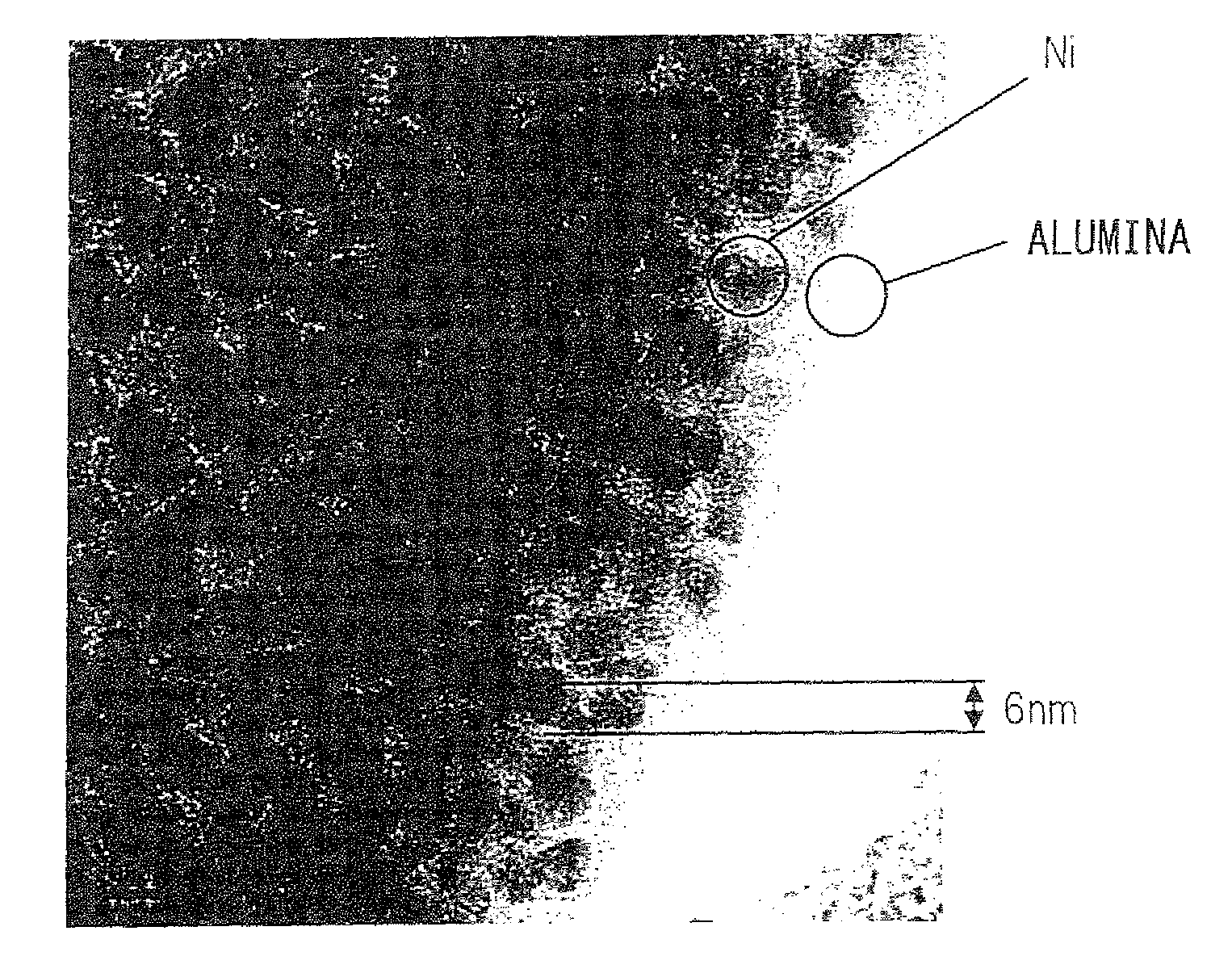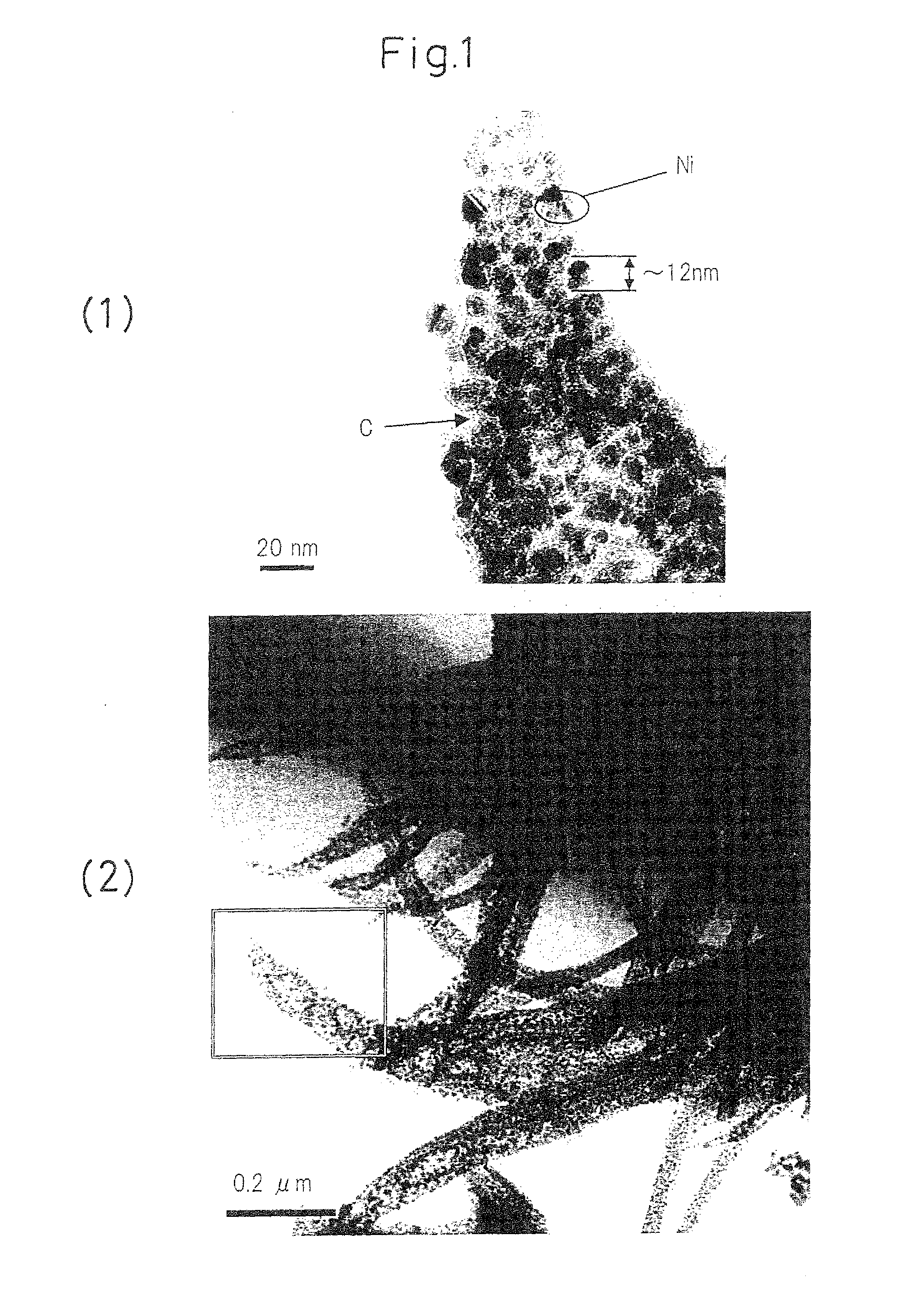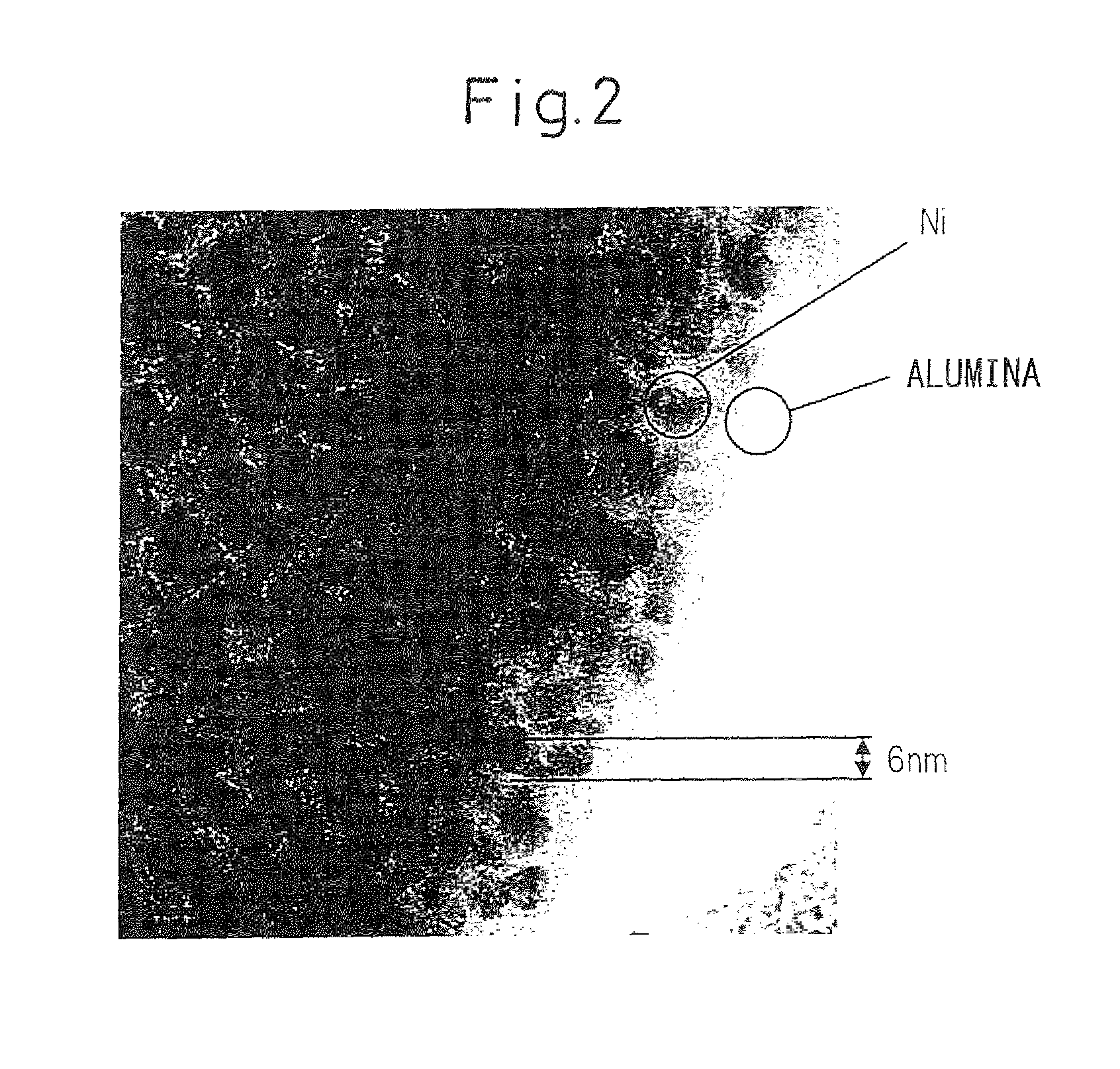Method of production of transition metal nanoparticles
a technology of transition metal nanoparticles and metal nanoparticles, which is applied in the direction of physical/chemical process catalysts, organic compound/hydride/coordination complex catalysts, other chemical processes, etc., can solve the problem of extremely difficult stably producing nanoparticles
- Summary
- Abstract
- Description
- Claims
- Application Information
AI Technical Summary
Problems solved by technology
Method used
Image
Examples
example 1
[0018]A preferable embodiment of the present invention heats a chelate complex Ni-DMG comprised of a transition metal M comprised of Ni and two dimethyl glyoxime (DMG) molecules and Ni at 350° C. and generates Ni nanoparticles carried on carbon particles. The routine and conditions are as shown below.
[0019]3 grams of Ni-DMG (commercial product: 99% Strem Chemicals / Aldrich ref 13478-93-8) were weighed. Ni-DMG is a powder of particle size of several 10 μm to 100 μm.
[0020]A Pyrex® glass tube with one closed end and one open end (length 30 cm, outside diameter 10 mm, inside diameter 8 mm) was packed with said weighed reagent at its closed end. To ensure uniform temperature of the sample part, this was covered by aluminum foil.
[0021]The tube was placed in an electric furnace, heated so that the sample part became 350° C., and held there for 4 hours. During the heating and holding operation, the open end of the glass tube was left open to the atmosphere.
[0022]After this, the electric furn...
example 2
[0028]According to a more preferable embodiment of the present invention, a mixture of the chelate complex Ni-DMG and alumina of Example 1 was heated to 350° C. to generate Ni nanoparticles carried on alumina particles. The routine and conditions are as shown below.
[0029]1 gram of alumina whiskers (commercial product: Sigma Aldrich ref. 551-643) was weighed. This was packed together with four alumina balls in a balling mill container, then 2 g of said Ni-DMG was added. The result was milled at a rotational speed of 350 rpm for 30 minutes.
[0030]The obtained mixed powder was heated by the same routine and conditions as in Example 1.
[0031]The product was generated in the state with the Ni nanoparticles carried on the alumina whiskers.
[0032]FIG. 2 shows a TEM photograph. The bright gray parts indicate alumina, while the black parts indicate Ni nanoparticles. The particles had a size of 6 nm in the example shown in the photograph and were overall 5 to 10 nm.
[0033]As a result of analysis ...
PUM
| Property | Measurement | Unit |
|---|---|---|
| diameter | aaaaa | aaaaa |
| temperature | aaaaa | aaaaa |
| temperature | aaaaa | aaaaa |
Abstract
Description
Claims
Application Information
 Login to View More
Login to View More - R&D
- Intellectual Property
- Life Sciences
- Materials
- Tech Scout
- Unparalleled Data Quality
- Higher Quality Content
- 60% Fewer Hallucinations
Browse by: Latest US Patents, China's latest patents, Technical Efficacy Thesaurus, Application Domain, Technology Topic, Popular Technical Reports.
© 2025 PatSnap. All rights reserved.Legal|Privacy policy|Modern Slavery Act Transparency Statement|Sitemap|About US| Contact US: help@patsnap.com



